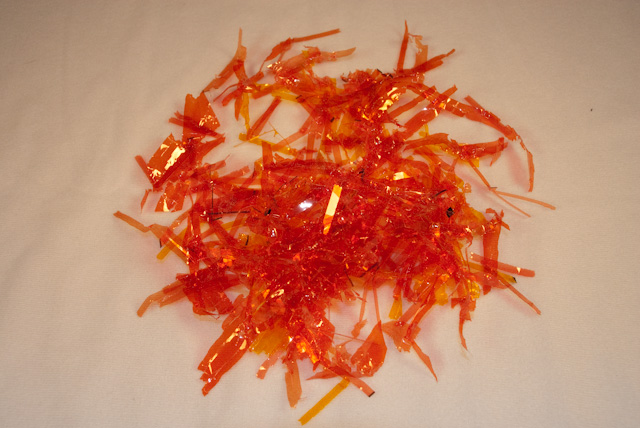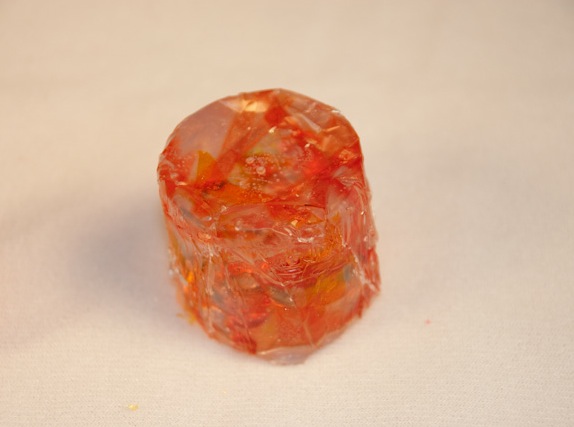Flame lights like the Le Maitre “Le Flame” and the Chavuet “Bob” are pretty decent flame effects, but there’s one small problem with them, and that’s that they have to be plugged into a power source. A couple years ago I helped a theater put together a portable fire effect since their show called for an actor to carry around a metal trash can that he would eventually “burn” some paper in. Unfortunately I didn’t take any photos of what we put together, but I’ll run down it here since it’s relatively straightforward.
The key to a good portable fire effect is having a decent power source. Most modern theaters likely have one readily available, and if the theater doesn’t then you’re bound to find that you or a friend already has one. Here’s a hint:

The battery pack from most cordless tools should provide you with an excellent power source. The reason you want to use a battery pack like this is because you need a compact power source that provides enough current to power both a fan and multiple halogen lights. Since these batteries provide enough current to provide decent torque for drilling, sawing, etc. then it’ll also power a fan & lights without any problems. On top of the battery pack you’ll want a few other things:
- One or two 12 or 24 volt (depending on your power source) MR-16 halogen bulbs, either clear or red/orange.
- A 12-volt fan. You can cannibalize one from an old PC or buy one from a local computer supply store.
- A piece of very light white fabric, preferably silk. If you don’t have any readily available you can buy replacement silk for commercial fire effects for about $10. Google will provide you with plenty of sources.
- Some wire, a small switch, and a couple alligator clips.
- Whatever you want to mount the fire effect in (a small trash can, etc. or even just a small framework that can be easily moved).
Simply mount the fan in the trashcan about two inches below the lip. Make sure it’s mounted so the airflow is upwards, out of the trash can. You’ll also want to mount a couple of fins on opposing corners of the fan in such a way that they partially disrupt the airflow of the fan. If you don’t do this then when you turn on the fan the silk will simply stand straight up in the column of air coming from the fan and won’t look like a natural flame at all.
Once you have the fan mounted I suggest you hook it up to the battery and test the silk. If you bought a replacement silk for a commercial flame effect then it likely has magnets glued to its base that you’re supposed to use to attach it to the flame effect. If you used pieces of metal for your fan fins then you should be able to attach the silk directly to them. You may need to cut the silk to fit your needs, and also spend some time adjusting the fins to ensure the silk flutters sufficiently to look like a realistic flame.
Mount the MR-16 lights on opposing sides, angled inward to a point towards the silk. If you have white bulbs then you’ll probably also want to attach some colored gel to the lights. Wire the bulbs and fan in parallel, routing them through a switch. Mount the switch somewhere around the lip of the trashcan where it can be easily flipped by an actor without being seen. Use alligator clips to connect the appropriate leads from the fan/lights and the switch to the battery and you should be all set.
One word of warning: The 12-volt MR-16 halogen bulbs can get hot very quickly. Make sure they’re properly insulated and also make sure anybody handling the flame when in use is aware that they’ll heat up.



